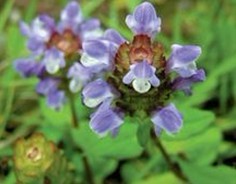Prunella vulgaris (known as common self-heal or heal-all) is an herbaceous plant in the genus Prunella. Prunella vulgaris grows 5 to 30 cms high (2-12inches), with creeping, self-rooting, tough, square, reddish stems branching at leaf axis.
Self-heal is edible: the young leaves and stems can be eaten raw in salads; the whole plant can be boiled and eaten as a potherb; and the aerial parts of the plant can be powdered and brewed in a cold infusion to make a tasty beverage.
The plant's active chemical constituents are betulinic acid, D-camphor, D-fenchone, cyanidin, delphinidin, hyperoside, manganese, lauric acid, oleanolic acid, rosmarinic acid, myristic acid, rutin, linoleic acid, ursolic acid, beta-sitosterol, lupeol, and tannins.
In vitro studies have shown it to have an antibacterial action, inhibiting the growth of pseudomonas, Bacillus typhi, E. coli, Mycobacterium tuberculi. It is also showing promise in research for AIDS, and allergies.
| Catalog | Product Name | CAS Number | Manual |
|---|---|---|---|
| CFN99741 | Cyanidin Chloride | 528-58-5 | |
| CFN99740 | Cyanidin-3-O-glucoside chloride | 7084-24-4 | |
| CFN99556 | Proanthocyanidins | 4852-22-6 | |
| CFN98754 | Hyperoside | 482-36-0 | |
| CFN99642 | Rutin | 153-18-4 | |
| CFN98800 | Oleanolic acid | 508-02-1 | |
| CFN97503 | Umbelliferone | 93-35-6 | |
| CFN98784 | Luteolin | 491-70-3 | |
| CFN98136 | Orientin | 28608-75-5 | |
| CFN98137 | Luteolin-6-C-glucoside | 4261-42-1 | |
| CFN98753 | Isoquercitrin | 482-35-9 |
A unique collection of 21 natural compounds from Caesalpinia sappan L.
A unique collection of 21 natural compounds from Rubia cordifolia L.
A unique collection of 22 natural compounds from Saposhnikovia divaricata (Turcz.) Schischk.
A unique collection of 30 natural compounds from Citrus reticulata
A unique collection of 22 natural compounds from Ziziphus jujuba Mill. var. inermis (Bunge) Rehd.





